#Shi qin Huangdi
Text
Shi Qin Huangdi would wear a “make China legalist again” hat. Change my mind.
#legalism#Shi qin Huangdi#Shi Huangdi#Ying Zheng#Zhao Zheng#my thoughts#qin dynasty#秦始皇#i am very silly#ancient china#chinese history
1 note
·
View note
Text
to this day I still want FGO Jiang Ziya and Qin Shi Huang to interact....
#when will fgo put them in the same room. i want jzy to comment on qsh's everything and vice versa pls........#lulas's randomness#fgo#fate grand order#qin shi huang#qin shi huangdi#jiang ziya#taigong wang#qin shi huang (fgo)#jiang ziya (fgo)#taigong wang (fgo)#will also add that honestly by This point I just have little hope of this happening but it was def a hope for a long time ever since my#brainworms latched onto jiang ziya fgo last year (only a few months after his release)#so since it cropped up in my mind again I wanted to put it out there
5 notes
·
View notes
Text
April 13, Xi'an, China, Shaanxi Archaeology Museum/陕西考古博物馆 (Part 3 - Qin dynasty to Sui dynasty):
First up is one of many bronze edict tablets of the 2nd emperor of Qin dynasty, made in 209 BC. Inscribed upon it in Seal script is one of two edicts, specifically the one from the 2nd emperor of Qin dynasty (秦二世), which basically is a continuation of Qin Shi Huang's edict on standardizing all weights and measurements. Here Qin Shi Huang/秦始皇 is referred to as Shi Huangdi/始皇帝, where shi/始 means "origin", and huangdi/皇帝 means "emperor".

^The edict inscribed is as follows (this is my VERY rough translation, please take this with a grain of salt, I'm not great at reading Old Chinese; original text is on bottom right of picture):
“First year (209 BC; first year of 2nd Emperor of Qin's reign), [We] issued an edict to chancellors Li Si and Feng Quji: Shi Huangdi pioneered this effort to standardize all weights and measurements, since then all such edicts have been inscribed on bronze. Now that [We have] inherited this Huangdi title, [We] shall not refer to Ourselves as Shi Huangdi here. Likewise, should Our descendants continue to produce tablets of Shi Huangdi's edict, they shall not take credit for Shi Huangdi's achievements. [We] hereby inscribe this edict on the left, so that all may be clear."
Ever since Qin Shi Huang tried to standardize systems of measurements for the entire country, every dynasty since Qin dynasty has also done the same. These are the standardized weights and volume measurements (all made with bronze) from Western Han dynasty (202 - 8 BC). Those volume measurement tools are very much like oversized measurement spoons, since they are mostly used to measure liquids and grains (in ancient China grains can be measured by volume).

Looks like I forgot about this one in part 2, this is a bronze sword from Warring States period (475 - 221 BC), I believe. It's decorated with carved pieces of jade (some are on the scabbard, but the scabbard has presumably decomposed over time):

The painted and carved stone doorway to a Eastern Han dynasty (25 - 220 AD) tomb. The actual (double) doors are in the middle, and the pieces around them are the side jambs and the lintel. Note the animals, mythical creatures, and humans depicted. On the double doors, in order from top to bottom, there's a pair of Zhuque/朱雀/Vermilion Bird, a pair of symbolic door knockers shaped like a beast carrying a ring in its mouth, and a pair of oxen. On the top right and top left of the lintel piece, you can also clearly see the sun crow and the moon toad, respectively.

The layout of some Western Han dynasty (202 - 8 BC) mausoleums. Note that the "pyramids" on the model aren't stone pyramids like the Great Pyramid of Giza, they are actually fengtu/封土, or artificial mounds of earth on top of the actual tomb to symbolically seal the tomb (feng/封 means "seal" or "to seal"), and can serve as tomb markers. Fengtu can differ vastly in size according to the social status of the deceased, so the fengtu of imperial tombs are usually huge, some so big that they are like small hills. However, while Western Han dynasty imperial tombs have these square-ish fengtu mounds, in Eastern Han dynasty (25 - 220 AD) the fengtu mounds became circular, and imperial tomb fengtu have been circular pretty much ever since. But fengtu wasn't just reserved for the elites, common folk also built small circular fengtu mounds on top of graves (these graves are called fen/坟; graves without fengtu are called mu/墓), and this is still practiced today, albeit much more common in rural areas since there are less people and more land. When people tend to the graves of their family members and ancestors on Qingming Festival, if the grave is a fen grave, people would pile more earth on the fengtu to make it rounder as part of the upkeep process.

A set of pottery figurines of entertainers from a Western Han era tomb. I love how they set the display up here, you can practically imagine the music and the dancing

More pottery figurines from Western Han era tombs

Western Han era hollow clay bricks depicting the Four Symbols/四象 of the cardinal directions: Qinglong/青龙/Azure Dragon of the East, Zhuque/朱雀/Vermilion Bird of the South, Xuanwu/玄武/Black Tortoise of the North, and Baihu/白虎/White Tiger of the West.

Left: a piece of intricately painted lacquered wood, I forgot where it's from but it was probably a piece of decoration on a larger artifact. Right: a piece of gold decoration inlaid with turquoise from Western Han era


The biggest decorated yubi/玉璧 (jade disc with hole in the middle) found so far, from an early Western Han dynasty tomb. Its diameter is 43.2 cm (~17 inches). If you zoom in, the inner band is decorated with these almost tadpole-like little swirls, and these are called gu pattern/谷纹, since they might represent sprouting rice kernels. The outer band is decorated with 4 sets of kuilong patterns/夔龙纹 and 4 sets of dragon-phoenix patterns/龙凤纹. It's speculated that the patterns here together depict the universe, and the hole in the middle is where the spirit of the deceased will travel through. This particular yubi also has 六百六十一 ("six hundred and sixty-one") carved discreetly on the side, presumably a "serial number" left by the artisan who crafted this piece.

Decorated backs of bronze mirrors. I didn't take a picture of the plaque so I'm unclear on what time period these are from (may or may not be from the time period indicated at the beginning of the post):

Left: a hand-held incense burner. Right: a particular type of incense burner called a boshanlu/博山炉, so named because the lid was made to look like a mini mountain


Various Northern Zhou dynasty (557 - 581 AD) painted pottery figurines. Below middle arranged in a circle is the metal pieces on a belt.

Sixteen Kingoms era pottery entertainer figurines:

#2024 china#xi'an#china#shaanxi archaeology museum#chinese history#chinese culture#qin dynasty#han dynasty#northern zhou dynasty#sixteen kingdoms period#archaeology#history#culture
127 notes
·
View notes
Text


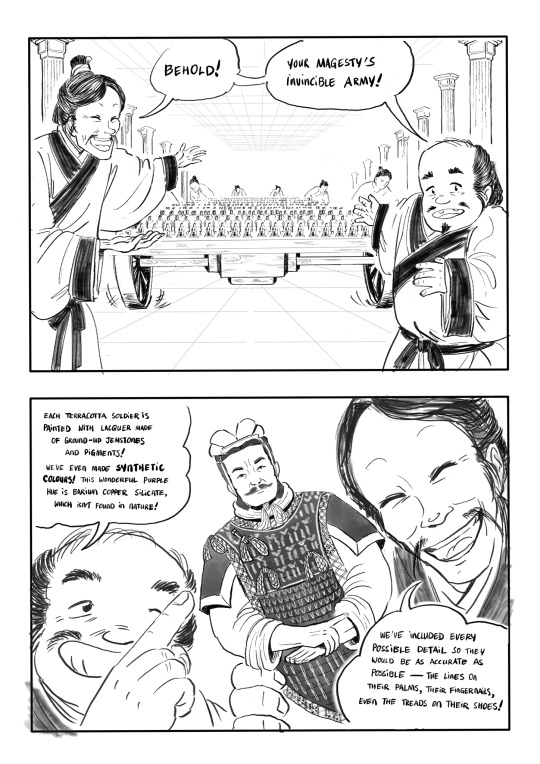
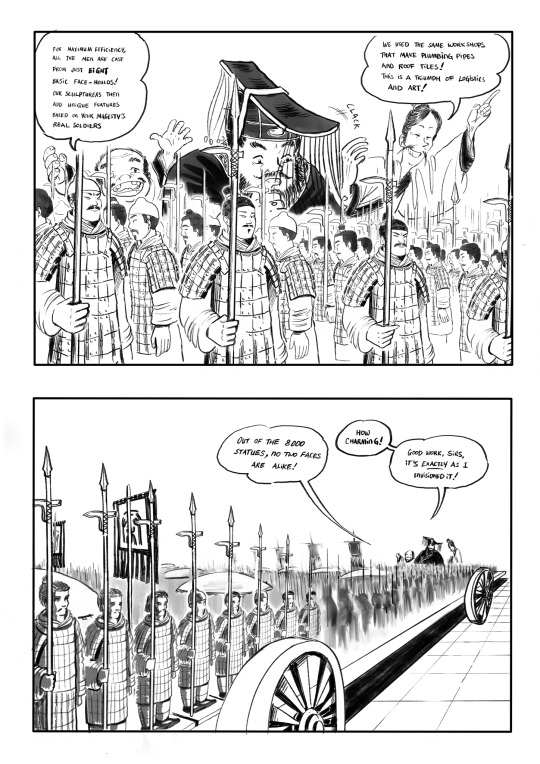

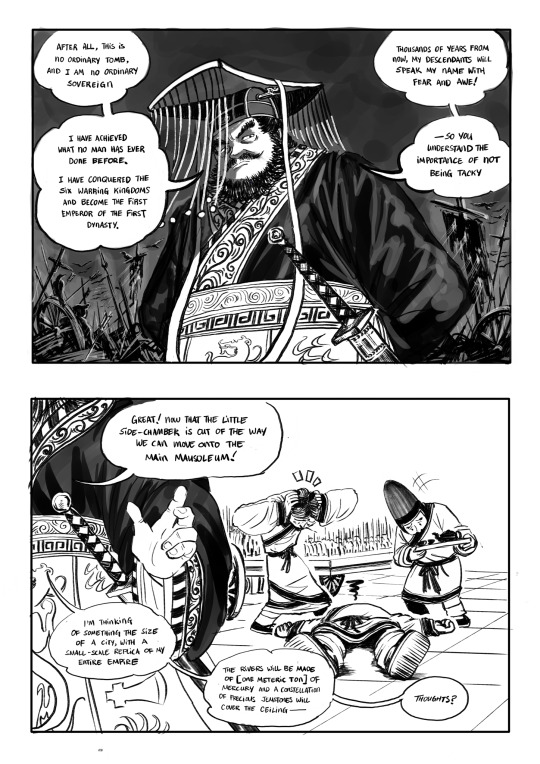
—Terracotta—
Ok so I visited xi'an during my trip back to china (3 months ago?), and this idea popped into my head during the 9h train ride back to shangdong. I am of course 100% projecting my own love of the terracotta army onto Qin Shi Huang, in reality he did not care for this pit of mud statues depicting lowly commoners. In fact, no one ever bothered to write about it and they were lost to history until 1974 when some farmers digging a well stumbled upon them. But it's exactly the reason I'm so fascinated by them. QSH's tomb has not been excavated, and although I have a running joke about cracking it open--mercury vapors be damned--none of the riches inside will ever enchant me as much as the chance to see the face of a person who lived during this time.
Notes under the cut:
#1
the title Qin Shi Huangdi means "First Emperor of Qin" and was given to QSH by later historians. He actually called himself the Shi Huangdi, "First Emperor", and that is the title I've gone with here.
in English the other kingdoms are translated as "states" (i guess to avoid confusion?) but in chinese they are very much kingdoms.
The terracotta warriors used thousands of craftsmen, many of whom were slaves from conquered kingdoms. From a storytelling perspective I thought it would be more streamlined if there were two main artisans who reported directly to QSH.
QSH's clothes are based on the overly complicated courtly regalia. which has 12 symbols that only the emperor is allowed to wear
Notice how this hat is ROUND at the front??? Well I CERTAINLY DIDN'T. HAD TO REDRAW IT!!!!!
the stripped shirt is based on this Chu woman figurine. Clothes were fairly unisex during this time and I thought it was a nice fit.
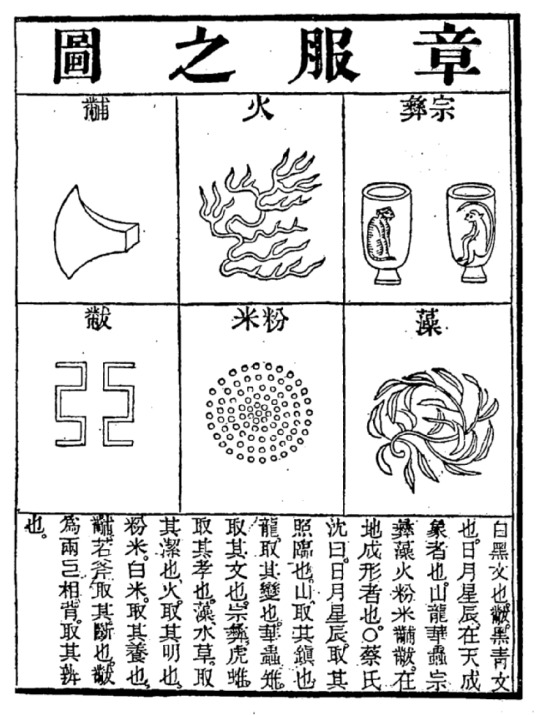
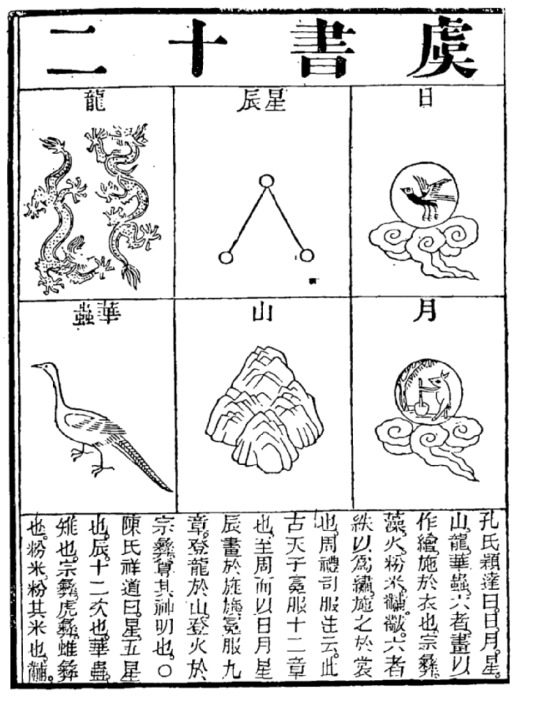



#2
Paperwork: writing was done on books made of bamboo slips. Anecdotally, QSH had an impressive work ethic and would read 100 bills every night.
Bronze Goose lamp: ok this is actually a Han dynasty lamp pls forgive me. I saw this bad boy at the xi'an history museum and it's bewitched me body and soul. The goose neck is hollow and connects to a reservoir of water in the belly, which minimizes smoke and cools the lamp.
QSH is remembered as a brutal tyrant and brilliant statesman, but I wanted to present a more human version of him here. Bored, tired and drowning in work he refuses to delegate. His new empire is balanced as precariously as everything else on his desk.
#3
The attendants standing behind him are holding little wood tablets called hu for taking notes. Their brushes are tucked into their hats/hair, inspired by Han dynasty custom. (You'll see me using Han stuff a lot. Their cultures were very similar to Qin, since it was only a few hundred years apart).
So I had a slight breakdown trying to find the correct hats for the eunuchs, and ended up redrawing everything the night I was due to publish. Closest thing I could come up with was a reference to a round-style Han Dynasty hat which evolved into this square Jin hat. Yes, this is a cry for help .
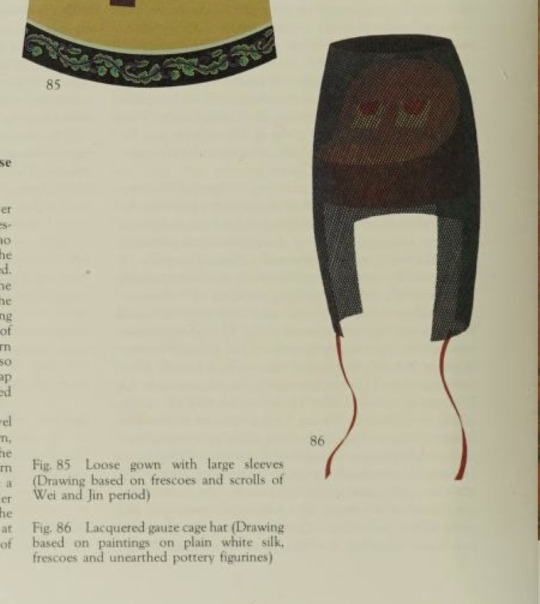
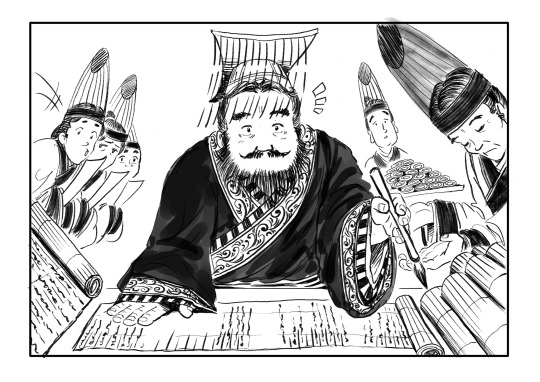
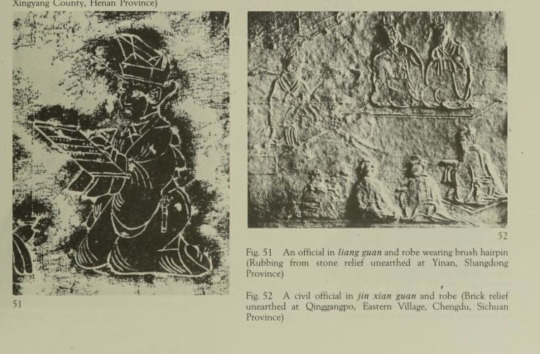
#4
the wheeled platform is 100% made up, I tried to come up with a plausible way of getting a bunch of figurines into the palace.
#5 & #6
Painted terracotta soldier
How were the terracotta warriors made
The General: Fun fact, I got to see this guy in person!
#7
The Epic Wide Shot was inspired by some Tang Dynasty terracotta figures I saw at the xi'an museum!
#8
THIS KNEELING ARCHER. ARGGGGG. He use to be my favourite guy. I even went into the pit and drew him IN PERSON. the archers inexplicably have their hair buns on the OPPOSITE SIDE OF THE HEAD. So because of him, I DREW ALL THE HAIR BUNS WRONG!!!! REDRAW!!!! PAIN AND SUFFERING!!!!

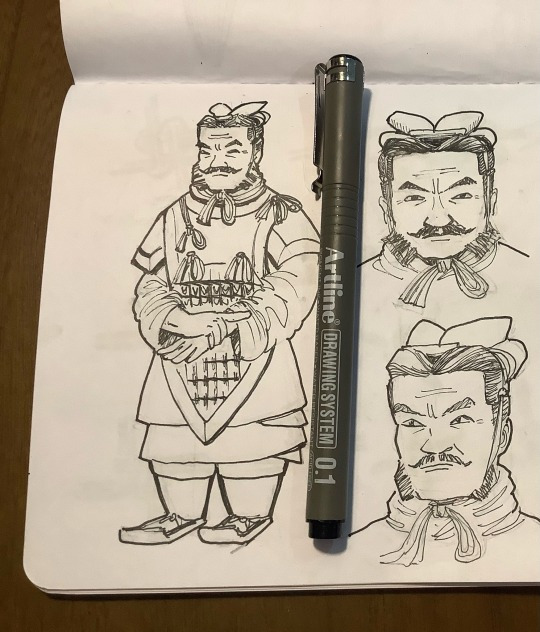
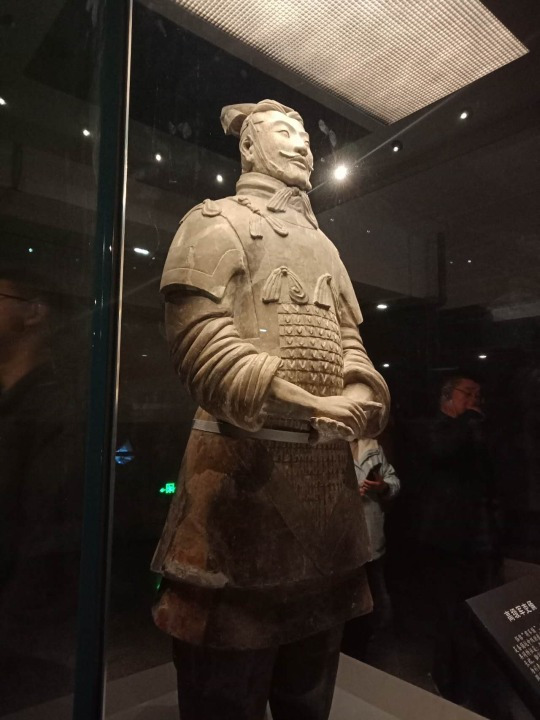
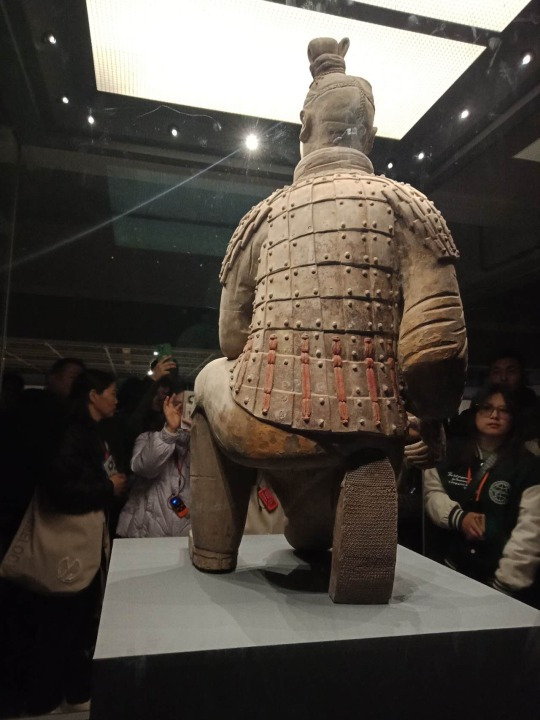


#10
Qin was famous for it's very long, thin swords. They were more useful as status symbols than actual weapons, as QSH knows from personal experience…
#11
QSH'S Tomb hasn't been excavated yet, but high levels of mercury have been detected in the soil, making the historical accounts of quite plausible.
#chinese history#warring states period#qin dynasty#qin shi huang#terracotta army#comics#my art comes with homework lol#art
223 notes
·
View notes
Text
Maybe qin shi huangdi’s body just did that. I’m sure if I drink mercury it’ll work this time.
110 notes
·
View notes
Text
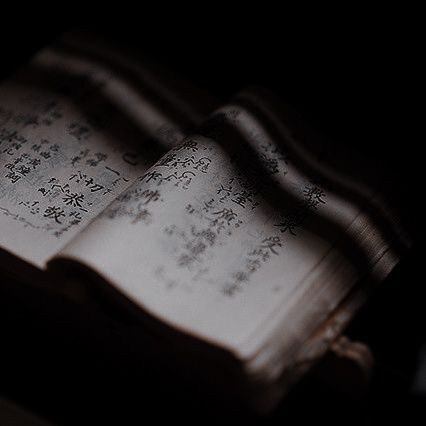


Yao Dàiyù [姚黛玉]
«"I [朕, zhèn] lack appreciation towards those who deemed themselves worthy of my [朕, zhèn] presence".»
Basic info here.
Yao Dàiyù is the head of the medical department for both humanity and divinity. Her complete knowledge in various medical areas makes her respected by both factions, thus saving unecessary discussions.
Her title of most usage is "Qín shì ruanyù" (秦のネフライト, Hata no nefuraito), being a title which translates directly as "Qin's Nephrite". She's the wife of Qin Shi Huangdi, and co-founder of the Qin Dynasty.
Other few titles she's been referred to are "The Queen where It all was reborn" (再生の女王, Saisei no joō), the "Queen of humanity" (人類の女王, Jinrui no joō) and various other titles.

Yao Dàiyù Is a woman slightly taller than chinese average stature (155.8 cm), with a fragile-looking overall body composition.
Her clothing right now is under construction, sorry for the inconvenience.

Yao Dàiyù is shown to be a very calm and collected yet cunning and apathetic individual.
She also seems to be well versed in multiple medical areas and politics, knowledge she uses throughout the Ragnarök rounds, demonstrating her deep intellect as she responded to Brunhilde's plea of a complete round's analysis with perfect accuracy.
Dàiyù, when encountering Odín wandering throughout the medical halls, showed no real fear for his menacing aura, just responding with wariness.
Her past seems to have made of her a fearsome and cold-hearted individual whose only concern isn't humanity's survival, but her husband and descendants, for what she'll do anything It takes for them to live.

Overall abilities: Yáo Dàiyù's knowledge makes her an opponent to be wary about. Her medical knowledge isn't just used to heal, but also for harm, which is shown as she easily dislocates an intrusive god's arm with the single movement of her wrist.
Brunhilde did consider her for Ragnarök, but declined to it in favor of having her as the head of the medical department and as a strategist in favor of humanity.
Average strength: At difference of the einherjars, she lacks the godlike strength to take against gods' or destroy structures with singular strength.
Godlike speed & reflexes: To complement her lack of strength, Dàiyù possesses a speed matching the likes of Gods as the ones participating in Ragnarök.
Godlike endurance & stamina: Dàiyù possesses a great degree of physical and mental fortitude. Her inhuman appliance and experiments on herself forced her to feel a great amount of physical and mental pain to the point she has grown careless of her own pain.
Martial arts master: Dàiyù Is a very skilled martial artist. She uses her family's signature fighting style and a more tactical approaching of said martial arts.
She's also shown to be a master Hand-to-hand combatant, quick to adapt to other people's combat styles and create a quick counter attack that favors her.
Medical knowledge areas: Greatly skilled in many medical areas, her área of most knowledge and skill Is the pharmaceutical and toxicology area, being really skilled when It comes to the creation of poison and toxines.
Musical knowledge: Having learnt since a young age, Dàiyù possesses a maestry with the guzheng, the xíqin and many more instruments.
Golden age: As a soul in the afterlife, Yao Dàiyù possesses the same appearance and skills that she did when she was at her peak.

✧ In chinese culture, jades were associated with Immortality. Therefore, her name represents and reflects her and Qin Shi Huang's pursuit for the Elixir of life, known as Xiandan (仙丹), throughout his life.
✧ Dàiyù's title as the Beauty of chaos Is thanks to her enemies' underestimation. Being a female, she was often disregarded and not taken into account until too late, when they were at the brink of death.
✧ [朕, zhèn] is the Chinese imperial pronoun that the Emperor Qin Shi Huang used on himself. It works as an I and also as a variation of the imperial 'We'.

Plot / Relationships / Image Gallery

"Every information here may be subject to changes. If any of the previous titles holds no URL Is because the page hasn't be created yet. Please wait for It" - Admin, Asheer.
#record of ragnarok#shuumatsu no valkyrie#record of ragnarok oc#ror#oc x canon#qin shi huang snv#record of ragnarok qin shi huang#ror oc#they're so cute together#original character#Spotify#Asheer✧: OC check'
9 notes
·
View notes
Text

Penglai Island, the mythical home of the immortals of Chinese myth. Though this image dates to the 1700s, the myth of Penglai Island dates back to the Zhou Dynasty. Qin Shi Huangdi, who unified China in 221 BCE, supposedly became obsessed with locating this island, sending several expeditions to find it.
{WHF} {Ko-Fi} {Medium}
168 notes
·
View notes
Note
ok so. i am very slowly reading through 七爷, and i don't understand what jing beiyuan is the prince of. like, i understand he's in charge of a territory in the south, but does he have additional responsibilities? is he very low but still on the list of people eligible to inherit? he clearly feels a great sense of civic responsibility, but i'm afraid i'm missing something.
hmmmmmmmm this is kind of complicated because there's some weirdness around translation of imperial dynastic titles, which then gets even more confusing when you slap the general ahistorical ambiguity of genre onto things
so I think the confusion occurs because of the conflation of "prince" as a title of rank, "prince" as "son of a monarch," and "prince" as "ruler of a territory." Jing Beiyuan's exact title is 南宁王 Nanning wang, which is usually translated as "the prince of Nanning," though I can't remember if 南宁 Nanning is simply his title as prince or an actual location (if it is a location, it seems not to be particularly plot relevant since I have uhhh no memory of it)
the thing about 王 wang as a title is that it got royally upstaged (ayyy) by Mr. 嬴政 Ying Zheng (aka 秦始皇 Qin Shi Huang / the Qin First Emperor) back in the 3rd century BCE. The reason why we call him "the Qin First Emperor" is because the man literally invented his own title, 皇帝 huangdi, which we now translate as emperor. Prior to that, monarchs were called 王 wang / kings, and during the Warring States period, you had location-specific kings: 楚王 Chu wang / "the king of [the state of] Chu," 吴王 Wu wang / "the king of [the state of] Wu," 齐王 Qi wang / "the king of [the state of] Qi," etc etc. And prior to that, you had the Zhou Dynasty, whose rulers all carried the title of 王 wang: 周文王 Zhou Wen Wang / “King Wen of Zhou” or “the Civil King of Zhou” and 周武王 Zhou Wu Wang / “King Wu of Zhou” or “the Martial King of Zhou” depending on how you translate them, etc. Qinshihuang, in order to declare his dominance in conquering the Central Plains, decided to one-up all of these petty kings by making up a new title for himself that was automatically higher than the rest of the 王 wang, rather than competing for an existing title
the ripple effect from Qinshihuang raising the ceiling on titles/positions in governance meant that everyone could effectively move up one tier. if, in the past, the ruler was called 王 wang and his son 王子 wangzi (literally "son of the king" but often translated as "prince"), then the creation of the new 皇帝 huangdi / "emperor" title meant that the emperor's sons were referred to as either 皇子 huangzi / "son of the emperor" or 王 wang (the distinction between the two is usually one of age). basically, 王 wang goes from meaning "king" to "position just below the emperor in rank." that being said, it looks like the general decision has been to translate 王 wang as “prince” in the imperial context rather than “king,” possibly because in English, we’re used to thinking of princes as inheritors in the same way imperial 王 wang are eligible for inheriting the dragon throne
notably, rulers of other states/countries/civilizations were all referred to as 王 wang, since imperial Chinese cosmology dictated that the emperor ruled all under heaven (ah, imperial hegemony...). there are also tiers of 王 wang, as in 亲王 qin wang and 郡王 jun wang, but let's not get into that now
so! back to Jing Beiyuan. this gets fun because he’s what’s called an 异姓王 yixing wang, lit. “a king/prince of a different surname.” that means that his family is not patrilineally connected to the imperial family (thus, having a different surname), but the title of 王 wang was at some point conferred upon his family. this usually occurs when, say, an emperor decides to reward a general with the title of 王 wang because he’s so pleased with his general’s accomplishments. during the conferral, the emperor will usually specify if this is a title that can be inherited forever or downgraded from generation to generation (i.e. from 王 wang to 侯 hou, and downwards until eventually the family returns to normal non-aristocratic status).
these 异姓王 yixing wang have a lot of power and influence, comparable to a son-of-emperor 王 wang, but not quite the same because they are not of the imperial family and therefore not in line for the throne. imperial princesses sometimes marry into these 异姓王 yixing wang families, but that can be a recipe for disaster because it begins to make that bloodline — well, not exactly eligible for the throne, but certainly more eligible than they were previously, and if there is one trait you can trust a dynastic emperor to have, it’s the paranoia about potential coups by powerful relatives (but is it paranoia if it really is true? anyway)
all that is to say — I don’t think Jing Beiyuan is the prince of anything in particular, though as a landed aristocrat I’m sure there are fiefdoms in his name. I can’t remember off the top of my head how his family earned the title of Nanning (or if it’s ever explained in the novel), but if I had to guess, I’d say that some ancestor of his was an accomplished general who had the title of 南宁 Nanning (which has the valence of “to bring peace to the south”) conferred upon him, which has subsequently been passed down through the family until it landed on his unfortunate head
251 notes
·
View notes
Text
Ancient India and China - Vocabulary
Vedas
-- a collection of hymns, chants, ritual instruction, and other religious teachings
Brahman
-- a single spiritual power beyond the gods and existing in all things
Moksha
-- union with Brahman
Karma
-- action and result
Dharma
-- personal religious and moral duties
Ahimsa
-- nonviolence to all people and things
Siddhartha Gautama
-- a Hindu prince
-- seeked causes of human suffering
Eightfold Path
-- right aspirations
-- directs people in achieving moral life goals and enlightenment
Nirvana
-- union with the universe
Chandragupta Maurya
-- founded the first Indian empire
Asoka
-- Chandragupta's grandson
Dowry
-- payment to the bridegroom
Shang
-- China's first dynasty
Clans
-- groups of families
-- share a common ancestor
Mandate of Heaven
-- divine right to rule
Dynastic Circle
-- rise and fall of dynasties
Feudalism
-- where lords govern their own land but owed military support to a leader
Zhou Dynasty
-- dynasty that established feudalism
Philosophy
-- system of ideas
Confucius
-- philosopher
-- concerned with social order and good government
Laozi
-- philosopher
-- founded Daoism
Shi Huangdi
-- "first emperor"
Qin Government
-- Shi Huangdi's government
Hanfeizi
-- philosopher
-- inspired legalism
Expansionism
-- policy of increasing territory
.
Patreon
#studyblr#notes#history#historyblr#world history#world history notes#ancient india#ancient china#philosophy#history of philosophy#world history vocab#history vocab#history vocabulary#vocab list#vocabulary list#historical governments#civilization#hanfeizi#shi huangdi#confucius#laozi#zhou dynasty#shang#dynastic circle
9 notes
·
View notes
Text

in tears at this portion of Qin Shi Huang's wikipedia page. Weekend at Huangdi's (210 BC)
16 notes
·
View notes
Text
Iron Widow
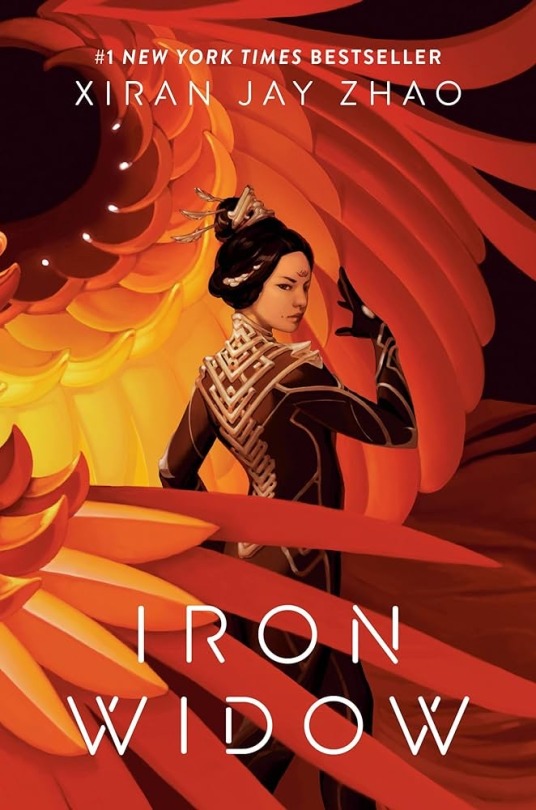

Spoiler alert
I picked up this book praying to god that it would be good because I spend half my life lurking around Xiran Jay Zhao’s TikTok and I didn’t want to let them down by leaving a bad review. I didn’t have to worry. Iron Widow was fucking fantabulous. It was so angry and rightfully so because that world is horrible. The most horrible thing about Huaxia is that different aspects of it are a reality for different women all over the globe. Women and even young girls are still being essentially sold as brides in some parts of the world. In other parts of the world girls are being denied an education. Even in the USA, where I live, which is supposed to be more progressive about women’s rights, women have lost the right to decide what to do with their own bodies in some states and there’s even a movement to take away women’s rights to vote. I still think that, at least from my (admittedly privileged) perspective things can still be solved nonviolently and we’re not quite at the “brutally taking over the country” level yet.
I think the most striking bit of Iron Widow for me was when Zetian realized that the folks from central command and all the soldiers were more scared of her, a woman who had only done what men had been doing for years, than a literal family annihilator. In the USA, all this push back against women’s rights to abortion and rights to vote came after a big feminist movement (#Metoo). All the men in power try to keep women downtrodden because they’re scared of women with power. Just something to think about.
Aside from the obvious feminist aspect of the book, one of the first things that I noticed about Iron Widow was the disability representation. The main character, Wu Zetian, has to use a cane to walk. I feel like physical disability representation, particularly ones that get in the way of every day mobility, are not present in YA literature much unless the book is specifically about the main character overcoming their disability. I was really happy for this type of representation. Finally a disabled character that wasn’t defined by their disability.
Another aspect of Iron Widow that I loved was the historical aspect. For one, all the place names mentioned (Sui-Tang border, Zhou province, and Ming province) were named after historical dynasties of China. I should know, my AP World History teacher made my whole class memorize the dynasties song. It’s been 5 years and it still haunts me in my sleep. Also, Wu Zetian was very clearly based off of the Empress Wu Zetian of the Tang dynasty. The Qin Zheng emperor dude was clearly based off of Shi Huangdi, China’s “first emperor.” Even his tomb in the volcano was like Shi Huangi’s tomb with the terracotta warriors. Rongdi was a word used to refer to certain tribes of people not of Han Chinese descent and the Xianbei tribe was a very important one. I’m sure there are more historical Easter eggs, I just didn’t notice them.
Iron Widow is the first YA book I’ve read that features a polyamorous relationship and I personally love it. I think the dynamics between Yizhi, Shimin, and Zetian are perfect. An added bonus is that I didn’t have to read about some dumb fighting over the girl part or “oh no, who should I choose?” That gets boring fast. Part of me kind of wished that Zetian would have a female love interest so we could read about a lesbian couple overthrowing the patriarchy but alas, we can’t get everything.
I do think that the ending was a bit too easy, though. It feels like it should be harder to take over the country than flying in on a robo-dragon thing, destroying some stuff, and declaring yourself the Iron Empress. I don’t know how I would have written it, though, cause I guess it might be pretty jarring to see this super powerful robo-dragon with super powerful pilots, one of whom hasn’t been seen in over two centuries. It probably would have been pretty hard (and stupid) to try and fight back, still, I’d like to have seen someone try (and more than just by holding hostages).
Characters
Wu Zetian: Zetian did things that I’ve been waiting for YA book characters to do for ages. Her just daring the soldiers to shoot her when they were trying to figure out what to do with her after surviving Li Shimin. Taking advantage of her untouchable position in different situations. That was some bad bitch behavior. I approve. I also like how you can see her character evolving as she realizes the complexities of her world. Like, somehow she becomes more empathetic and more ruthless at the same time. I think it’s because the more she learns about her world and the people around her, the more attachment she develops for some characters (like Shimin) and the more hate she develops for other characters (An Lushan). You also see her will to live increase as she goes from thinking of herself as just another cog in the machine to realizing that she can make a big change.
Li Shimin: I’m probably going to have hordes of angry fans coming at me for this comment, but Shimin was kind of disappointing to me. I think it’s because I was expecting dark humor and wry comments but instead I just got dark and serious. I mean, it makes sense when you consider his backstory, but still I wish we could’ve gotten some humor out of him. Some indication that he feels things other than anger, guilt, or sadness. Of course, that doesn’t mean I didn’t get invested in his fate. No, I’m still desperate to find out if Zetian manages to get him back. I’ll have to wait until December to find out though.
Gao Yizhi: It should come as no surprise to anyone who’s read my past book reviews that Yizhi is my favorite character. I mean, he basically reads as a blueprint for “Pink’s Fictional Crushes,” the rich pretty boy sweetheart with a hidden ruthless side and most importantly that long k-drama/c-drama hair. I’ve gotta say, I was not expecting him to be the comic relief, but he kind of was. I mean, some of his lines were just golden “you can’t shoot me; I’m rich!!” The only thing that kind of disappoints me about Yizhi is that he doesn’t seem like a strong character. I mean, he clearly is because it definitely takes a strong character to pew pew laser beam their dad, but for most of the story, he was kind of just Zetian’s fanboy. I’m really hoping in the next book we see more of his personality separate from Zetian.
7 notes
·
View notes
Text

Further Servant details under the cut:
QIN SHI HUANG:
The First Emperor of China, Qin Shi Huangdi. An immensely powerful and notable Saint Graph, belonging to one who sees himself at the pinnacle of humanity.
While some may call him a ruthless tyrant, his actions are made with the best of intentions for humanity. However, he feels as if he himself is the only one fit to make that decision. While in proper records Qin Shi Huang was never a 'Zhenren', or a 'True Human', it seems as if he's manifested as such as a Ruler-class. A grand immortal with immense power, he exists to preserve and continue the Qin Dynasty no matter what.
Proper records show that he may have been poisoned by mercury in an attempt to gain the immortality that he seems to be flaunting as a Ruler, as a Servant he seems to wield it with effortless ease, along with divine flames.
UESUGI KENSHIN:
The Dragon of Echigo who went by many names and declares herself undefeated, Uesugi Kenshin.
She sees herself as an Avatar of Bishamonten, the God of War and Wisdom. Those that wage unfair battles, those that wage fair battles… just those waging battle in general- all are fair game for the mighty Kenshin. Wielding many weapons, her presence on the battlefield is an unrelenting assault, laughing as she tears through enemy armies and strikes fear into those that have the misfortune of calling Uesugi Kenshin-- no, Bishamonten-- their foe.
She has difficulty connecting to the rest of humanity, often trying to bridge the gap via smiling, though her uncanny smile tends to only distance her more from her peers. She represents the winds of war, blinding fast and ever brutal, yet perhaps there is room for comfort with that constancy.
JEANNE D'ARC:
The true version of the 'Holy Maiden' from the Hundred Year's War, Jeanne d'Arc.
A pure soul that possesses no wrath nor regret in her heart, she believes in things being done fairly and openly, and respects the desires of others as long as they aren't ones of malice or harm. A 'holy maiden' with great influence and charisma, who claimed to hear the Voice of God in order to lead France to victory.
While she oft feels the pressure of living up to the title of 'Holy Maiden', she does not accept that as her core self. She sees herself as simply Jeanne, living humbly and openly, and fighting for a divine justice that benefits all those who fly under her flag. However, that does not mean that she shies away from unpleasant tasks, and is just as willing to fight and brawl in the dirt and mud like any other proud Servant.
9 notes
·
View notes
Note
Who were the immortals that fought Timur the first time?
I will list the ones Siddhartha spoke of in the interlude by name.
Actually fought Timur
The MC
Attila, King/Queen of the Huns
Anhuret, Slayer of Enemies
Kukulkan, The Feathered Serpent
Charles, The Holy Roman Emperor
Tsukuyomi-no-Mikoto
Qin Shi Huangdi and his daugter Princess Huayang
And 1 more that I don't want to spoil this early
Supporting the operation
Siddhartha Gautama(Binding)
Cyrus the Great(Backup and leading auxiliary force)
And 1 more I also don't want to spoil
41 notes
·
View notes
Text

Name: Kazuko Uchiyama
Age: 2,000+ (Appears 35)
Height: 5'6"
Affiliations: Gotei 13 [1st division; 3rd seat]
Zanpakuto: Nobushi [Outsider Warrior]
Shikai: Melt [Release]
- Kazuko's Shikai is a bladed fan allowing her to manipulate metal in both earth, ores, swords, and her surroundings.
Bankai: Nobushi: Tetsu no guntai [Outsider Warrior: Iron Army]
- Kazuko's bankai gives her control over metal in order to create an army that follows her commands almost like a summon. When dismantled, they can easily put themselves back together again or multiply depending on their next moves. [Think Qin Shi Huangdi's Terracotta army]
#* {Kazuko Uchiyama; OC}#* {Headcanons}#Ah yes Chojiro's wife<3#(Reb's specifically)#I *FUCKING* love Kazuko listen she's so good.....
6 notes
·
View notes
Text
Qin Shi Huangdi: Boy, unifying China sure was tough! At least now I don’t have to worry about my dynasty collapsing.
Qin Er Shi, Zhao Gao, Li Si, Wu Guang, Chen Sheng, Xiang Liang, Xiang Yu, and Liu Bang:

19 notes
·
View notes
Note
Tomato and Orange for Sunny?
(OC ask)
🍅 [TOMATO] How misunderstood is your OC? In-universe or IRL.
“So, most of the time I’m not talking to people one-on-one. Usually I’m streaming, and when I’m talking to my devoted followers and voters, I’m a lot more like this! ❤️ Good morning American League, I love you! ❤️🤍💙 Did you all remember to eat your breakfast, brush your teeth, and buy my merch? You did? Yaaaaay, I’m so proud of you!”
“And because of that, people are pretty surprised when they talk to me one-on-one. They misunderestimate me at first, and then I remind them that I have millions of shut-ins with paychosexual fixations on lil ol’ me, and that’s when they realize that it’s in their best interest to make me happy.”
🍊 [ORANGE] Does your OC have a prophecy surrounding them? If they don't, what would it be?
“So the State Pantheon has this thing called the Contingent - it just sounds like Great Man theory but if you say that they get really mad and go ‘no it’s about the contradictions of the Material being in a conflictive equilibrium which can be temporarily subsumed and thereby resolved with a blah blah’ but basically a Contingent is like a Napoleon or a Qin Shi Huangdi, someone who changes their political and cultural landscape so deeply that their life marks a change in eras.”
“Anyway, I bet I’m a Contingent, because it sounds cool and I’d like another feather in my cap. Maria’s always like ‘Sunny it’s more complicated than that, you have to read Hegel, if our generation’s Contingent is selling ahegao hoodies I’m going to kill myself,’ but she’s always like that.”
9 notes
·
View notes